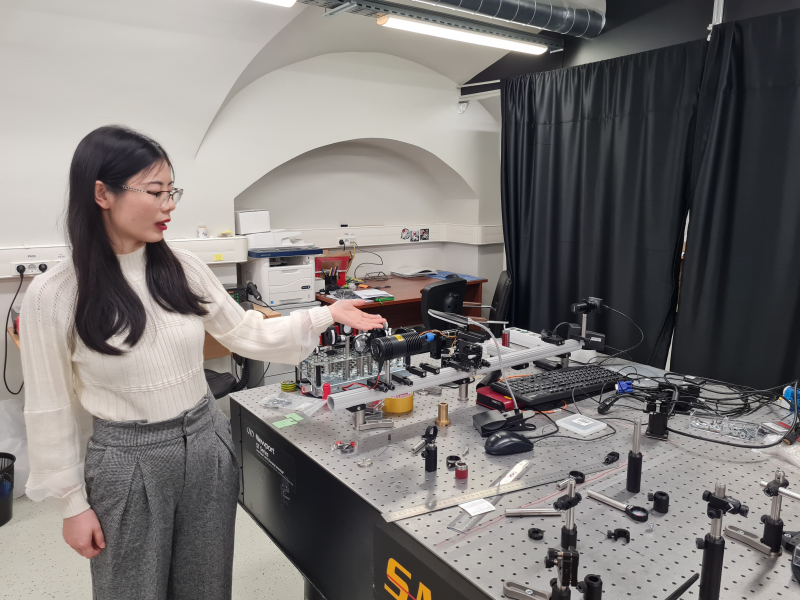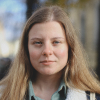Science Communication
Yali Sun on Life at the Optical Laboratory
Yali Sun came to St. Petersburg from the now-infamous Wuhan. I caught up with her to hear all about a day in the life of a fourth-year PhD student at the Faculty of Physics and Engineering, as well as some of her experiences in Russia so far.

I met with Yali on a Sunday afternoon. Researchers have their own specific schedule and every day of the week someone is working at the Optical Lab because experimental scientists at the International Research Center for Nanophotonics and Metamaterials need to work with students and also in the lab. This laboratory is located at ITMO’s building on Lomonosova 9.
Five years ago, Yali came to ITMO University for a one-year exchange during her Master’s studies. In fact, she was the first exchange student from the Huazhong University of Science and Technology (HUST) at ITMO. Coming to Russia gave her the opportunity to experience different labs and new equipment because during her Master’s studies in China, she only had the opportunity to do computer simulations.
"After I came to Russia, I understood that mathematics is taught at a very good level here, physics, optics, and computer science. But people here are so obsessed with their own world that the country doesn't really show itself to the world that is around it. That's why a lot of people don't know this university and laboratory. It is so good but no one knows about it. Now, each semester there are exchange programs between ITMO and HUST," explains Yali.
Her supervisor at that time encouraged her to complete her PhD at ITMO and continue her research in the field of optical properties and applications of hybrid metal-dielectric nanosystems.
"Currently, our laboratory is studying the optical properties of nanosystems. The main research topic of my PhD thesis is the combination of "plasmonic" and dielectric materials. Usually these materials are studied separately, but each of them has benefits and I try to combine them," shares Yali.
Researchers typically fabricate the metal and dielectric nanostructures or substrates separately and then combine them, after that, this new material has different optical properties compared to pure metal or dielectric nanostructures. Sometimes they also mix the metal and dielectric materials together and then fabricate hybrid nanostructures directly.

As part of her PhD studies, Yali had the opportunity to spend a month in Italy and visit CNR Nanotech in Lecce, Italy. "Our Italian collaborators fabricate chiral plasmonic helices, which have different optical responses for left circular polarized and right circular polarized light illumination. Since most of the biomolecules in our body are also chiral, these helices are very useful for sensing and detecting disease."
She has also made efforts to keep in touch with her Chinese colleagues. She joined a BRICS grant with one such colleague, and they have since been exchanging ideas on green printing technology for novel optical metadevices. Now, however, they don't have the opportunity to visit each other because of COVID-19.
Yali considers herself an experimental scientist rather than a theoretical one. She explains that theoretical scientists' work comes first, what they do is look at a system from an analytical point of view. Then they also do computer simulations using different software and try to catch the system response. As an experimental scientist, she spends most of her time in the lab, checking and measuring scattering, reflection, transmission, photoluminescence, second-harmonic generation, Raman scattering, near-field mapping, SEM, and so on. So it’s not just about running simulations and doing calculations on a computer, but rather measuring responses from real nanostructures. Since her Master’s studies were mostly focused on running simulations, she is really glad to be able to work with real samples at the ITMO lab.

After completing her PhD, Yali hopes to do a postdoc, either at ITMO or another similar lab.
"I will probably be here because now I have fabricators that can provide me with a lot of samples. I also have them in China; they provide me with samples and they have been doing this monthly even in the current pandemic situation. It's good that I stayed here, for I can continue working with my Master's and PhD students. After that, I will try to go back to China and find a position there," says Yali.
Regarding life in St. Petersburg, she explains that as an exchange student, she had a lot of free time and enjoyed the beauty and European style of the city. "It was September when I first came here, the best season with blue sky and yellow leaves. I had also been to different museums and places during my exchange year."
Yali shared some useful advice for international students who want to come to Russia and complete their PhD studies here.
"I really recommend that students come to Russia. Russian universities are really good, and there are real experts in mathematics and physics at our department. And this is very important. I think this also gave me a great desire to become a teacher. Because you can not only learn, but also pass your knowledge to other students. I shared my impressions with my home university and recommended them to send exchange students to ITMO every year. International students will benefit a lot from the experience and will be impressed by ITMO University."
